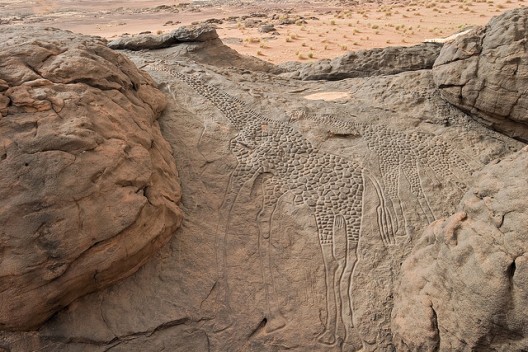When thinking of rich green landscapes—ones where an abundance of rain keeps everything growing and vibrant, supporting water-loving wildlife like crocodiles and hippopotamus—the Sahara is hardly the place that comes to mind. Yet 6000 years ago, this would have appropriately described what has become the dry, thirsty landscape of the Sahara we know today.

The desert’s previous state of relative lushness has long been known by scientists and others. Ancient rock drawings from the area depict a sort of Shangri-La, reflecting an ecosystem that would require considerably more rainfall to exist. But what caused the Sahara to shift rapidly into the world’s most famous desert has remained a mystery.
Previous studies of how climate works can help explain this shift, including variations in energy from the sun due to wobbles in the Earth’s orbit, and the fact that a landscape with lots of vegetation helps promote local rainfall. Yet those two factors alone fell short in explaining why the ancient Sahara was green.
Abigail Swann, assistant professor of Atmospheric Sciences and Biology, and her colleagues published a paper in the July edition of the Journal of Climate that could provide the missing link.

Swann and her colleagues propose that the heavily forested landscapes of an ancient Europe and Asia were key to the thriving savannah ecosystems of the Sahara. 6000 years ago, before most agricultural expansion and the intense urbanization of Eurasia, there was substantially more forest cover that there is today. Swann accounted for that ancient forest cover by building them into computerized climate models, and found that when combined with other factors that affect climate, it was enough to influence atmospheric circulation patterns in the Tropics and drive much more rain to fall on the now-parched Sahara.
“This is really a new way of thinking about how forests matter for climate,” said Swann. “We find that the cutting down of ancient forests in Europe can change where it rains in Africa, and also across the tropics.”
These findings have broader implications than simply explaining a greener Sahara. They suggest to scientists a previously-unknown mechanism that affects climate patterns, one where vegetation in one place can have a huge influence and impact on the rainfall patterns and atmospheric circulation in another. Not only does this help explain past landscape conditions that have drastically changed, but it gives scientists another tool to predict how land use and a changing landscape can interact with the atmosphere and influence future climate dynamics.
“Scientists have used information about where plants grew in the past as records of the climate conditions that must have existed, but this study shows those plants of the past are telling us about a much bigger picture—and that’s a really exciting new source of information.”
Swann’s research was supported by the National Science Foundation.
Giraffe rock carving photo: Matthew Paulson (C), license.
Homepage photo of an antelope sleeping: Linus Wolf (C), license.

